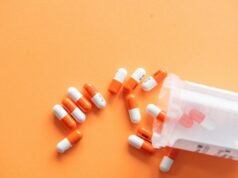
By Holger Hotz
Heart failure is estimated to occur in 1–2% of the western population. Despite advances in medical therapy, many patients with heart failure will progress to the stage where they require device-related therapies (eg. implantable cardioverter defibrillator and/or cardiac resynchronisation therapy) and a significant number will deteriorate further till they require mechanical circulatory support or heart transplantation.
The impact of mechanical cardiac assist device therapy has increased over the last few years primarily due to the shortage of donor hearts thereby increasing the need for alternative therapeutic options. Although technical progress has allowed cardiac assist device therapy to be effective in improving survival and quality of life of patients with refractory heart failure, complications associated with this therapy (eg. haemorrhage, thromboembolic events and infection) have not been completely eliminated.
However, a novel, less invasive therapeutic option has been developed to stop the progression of heart failure and to give patients the chance of recovery. The C-Pulse system (Sunshine Heart) is an extra-aortic counterpulsation device for long-term treatment of patients with moderate-to-severe heart failure of New York Heart Association (NYHA) class III and ambulatory class IV, who are refractory to optimal medical and cardiac resynchronisation therapy.
The system consists of a pneumatically driven cuff placed around the ascending aorta, an ECG-sensing lead and percutaneous driveline connecting the system to an extracorporeal driver unit. The inflation of the cuff is ECG triggered with inflation starting shortly after aortic valve closure with a volume up to 26cc (depending mainly on aortic size) and deflation beginning pre-systole resulting in a decreased afterload and increased blood flow to the coronary arteries and body. Most importantly, the device is placed outside the bloodstream eliminating the need for anticoagulation and enabling the patient to temporary disconnect from the system.
The polyurethane balloon has a low stress design to conform to the ascending aorta and minimise trauma. However, patients with evidence of significant ascending aortic calcification, aortic valve incompetence, ascending aorto-coronary artery bypass grafts or any history of aortic dissection are not eligible for the system. Although one might argue that the volume is too little to achieve the same haemodynamic effects as an intra-aortic balloon pump, the proximity to the aortic valve allows equivalent or better counterpulsation. Davies et al compared the effects of intra-descending and extra-ascending aortic counterpulsation in a pig model and showed that pre-systolic unloading is comparable while more efficient enhancement of diastolic coronary blood flow was achieved with the extra-ascending aortic balloon pump despite the difference in balloon volume.1 Legget et al showed in their feasibility study an increasein coronary blood flow in humans under extra-aortic counterpulsation.2 However, there are no published human data available comparing intra-ascending aortic and extra-ascending aortic counterpulsation.
The implantation is simple and can be done without cardiopulmonary bypass either through full sternotomy or less invasive through mini-sternotomy or mini-thoracotomy. Since May 2013, our centre in Germany implanted the C-Pulse system in five patients. Unfortunately, one patient had to be switched to a left ventricular assist device five days after surgery due to a ventricular arrhythmia. All other patients improved under the C-Pulse treatment and showed a gradual increase in left ventricular ejection fraction over time of up to 30%. Already four patients improved their functional status by one NYHA class and one patient was weaned from the system after seven months. So far no stroke, myocardial infarction, major bleeding or major infection due to the device has been reported.
Conclusion
The C-Pulse system can improve cardiac function and lead to relief or recovery from chronic moderate-to-severe heart failure. Thereby it could have the potential to stop progression of cardiac failure in some patients and reduce the need for left ventricular assist device therapy or transplantation. However, a randomised trial needs to show these potential benefits of the system, and the effect may depend on early consideration of the C-Pulse system in the management of advanced heart failure as the beneficial effects might be bigger than in patients with very advanced disease. For now the placement outside the bloodstream eliminates two of the major complications from assist device therapy: thromboemboli and haemorrhage. As C-Pulse augments native heart function and is thereby not life supporting in contrary to other assist devices it can be expected that the obstacle of a fully implantable device is sooner to overcome which would eliminate the final complication of assist device therapy: infection.
The C-Pulse System is currently an investigational device in the USA where now a randomised trial is being conducted to eventually submit data for FDA approval. It is CE marked and used by European centres participating in the European multicentre study OPTIONS HF.
Holger Hotz, Cardio Centrum Berlin, Academic Teaching Institution of Charité University Medicine Berlin, Germany
References
1. Davies et al. Heart, Lung & Circulation 2005; 14:178–86
2. Legget et al. Circulation 2005; 112(9 Suppl): I26–31
Holger Hotz: Provides consulting services for Sunshine Heart













